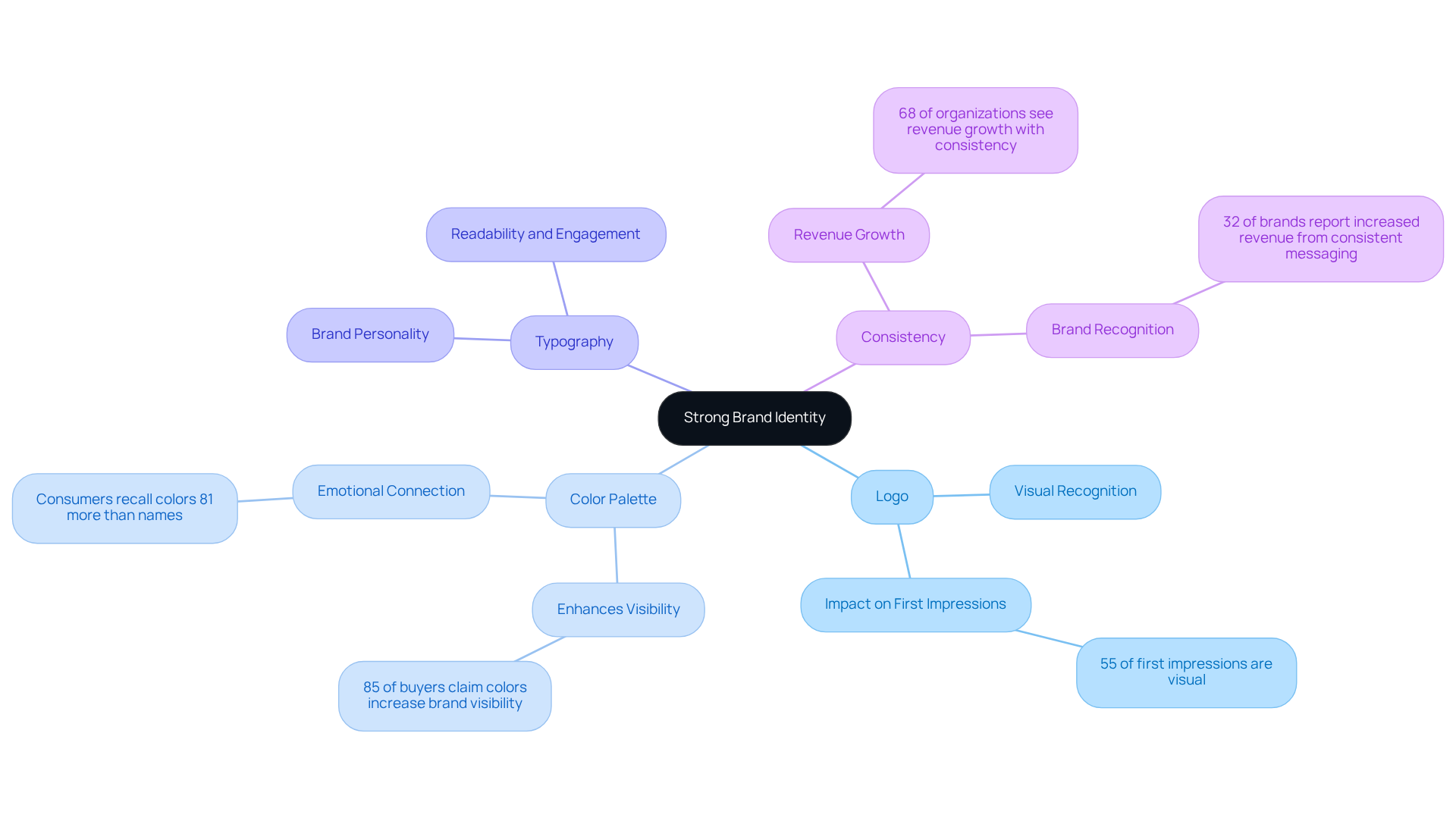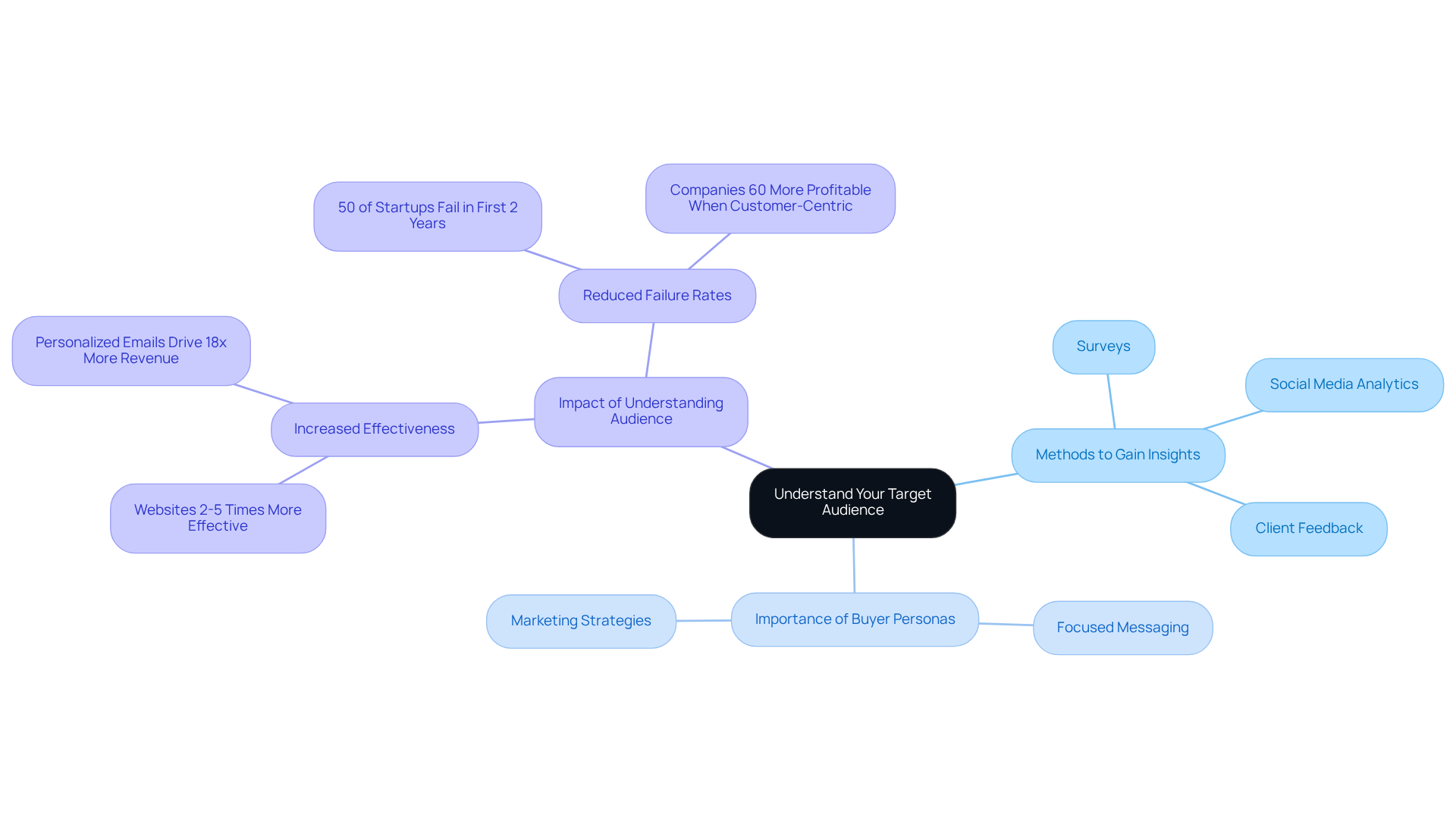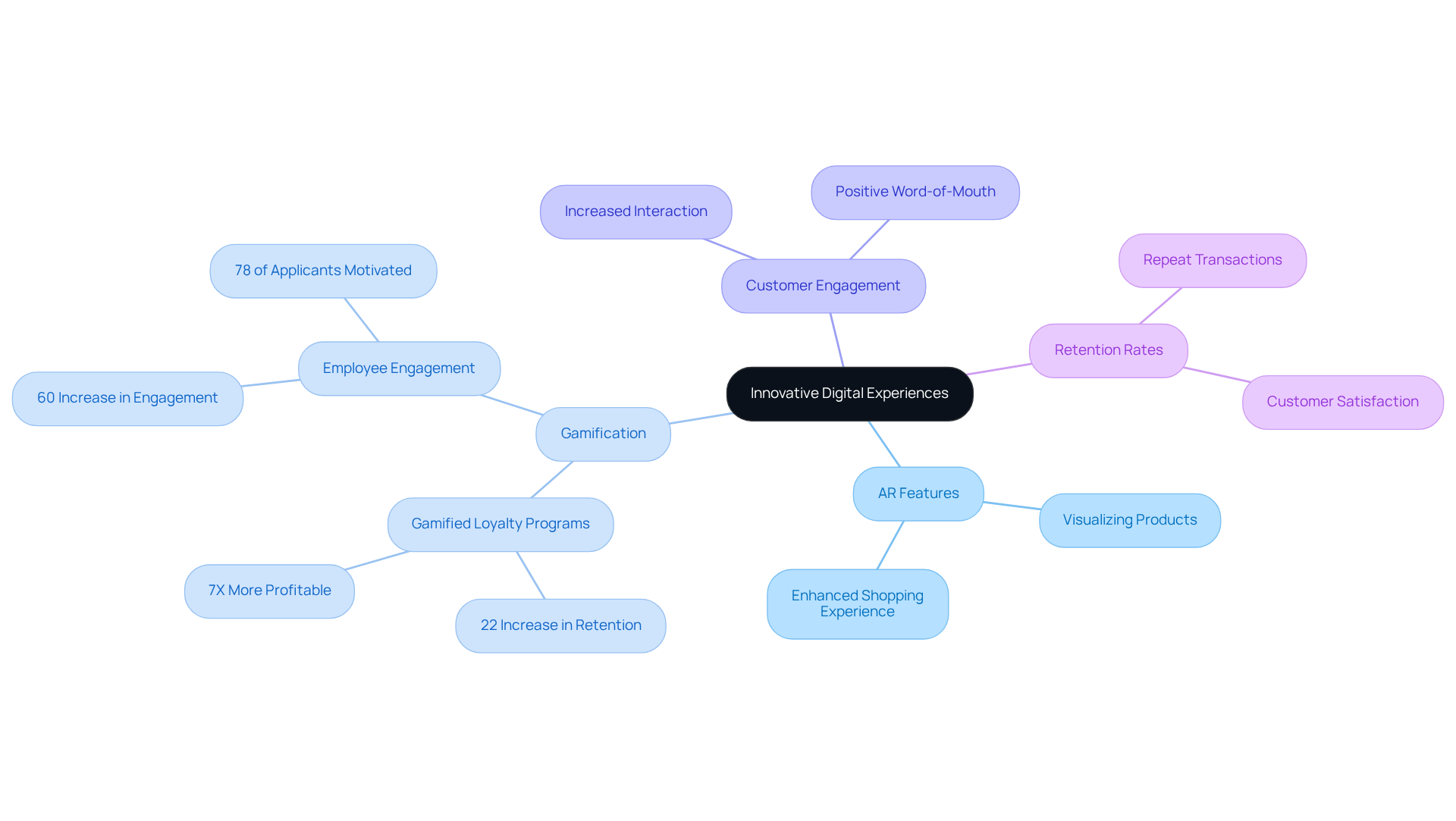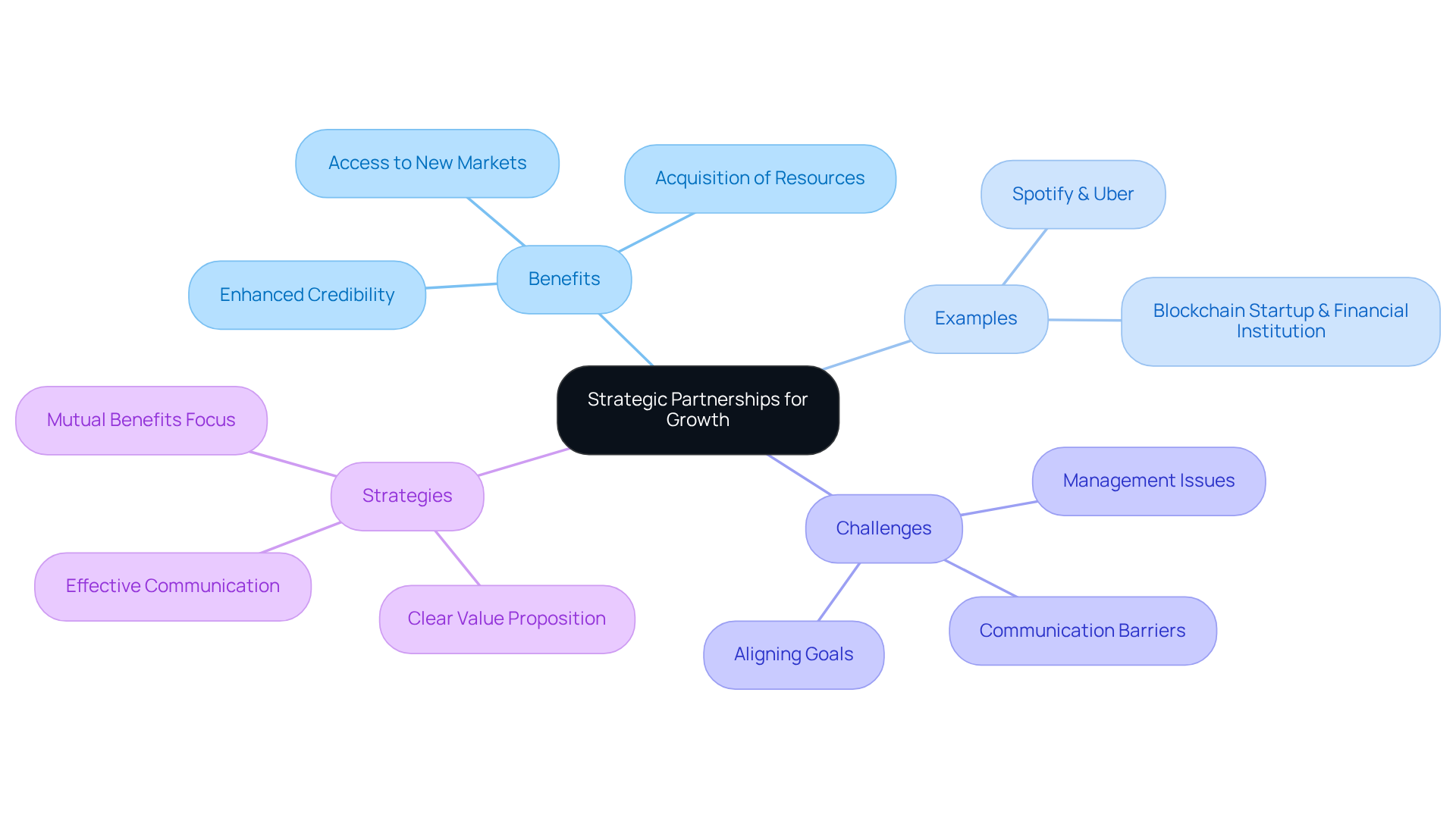Overview
For tech startups in the USA, establishing a strong brand identity can often feel daunting. Many founders grapple with the challenge of making their mark in a crowded marketplace. This struggle can lead to feelings of uncertainty and frustration, as the pressure to stand out intensifies. However, there are key strategies that can help alleviate these concerns and pave the way for success.
-
Understanding your target audience is crucial. By taking the time to truly know who your customers are and what they value, you can create a brand that resonates deeply with them. This connection fosters customer engagement and loyalty, making it easier to navigate the competitive landscape.
-
Additionally, leveraging innovative digital experiences can set your brand apart. In today's fast-paced world, offering unique and memorable interactions can leave a lasting impression on your audience. Consider how you can incorporate technology in a way that enhances the user experience and builds a strong emotional connection.
-
Building strategic partnerships is another essential strategy for growth. Collaborating with other businesses can not only expand your reach but also provide valuable resources and insights. These partnerships can create a supportive network that helps you thrive in challenging times.
Ultimately, these strategies are not just about creating a memorable brand presence; they are about fostering a sense of community and ensuring sustainable business success. By embracing these approaches, you can transform your startup into a brand that truly resonates with your audience, supported by examples and statistics that demonstrate their effectiveness. Remember, you are not alone on this journey—there is a community ready to support you every step of the way.
Introduction
In a world where technology startups are blossoming at an extraordinary pace, the challenge of creating a unique brand identity has become more pressing than ever. Developing a compelling brand not only boosts visibility but also nurtures trust and loyalty among consumers. Yet, many tech startups encounter significant obstacles in truly understanding their target audience and harnessing innovative digital experiences to differentiate themselves. This can be a daunting journey, filled with uncertainty and frustration.
How can these companies navigate the intricate landscape of branding to find success in such a competitive market?
At RNO1, we understand the emotional and professional stakes involved, and we're here to support you in this endeavor.
Establish a Strong Brand Identity
Establishing a in the USA can feel overwhelming for tech companies, especially when it comes to creating a cohesive visual language. A memorable logo, a distinctive color palette, and carefully chosen typography are essential elements that should authentically reflect your mission and values. This is not just about aesthetics; it resonates deeply with your target audience, forming a crucial connection.
Imagine a tech startup focused on AI. By adopting a futuristic tone in its messaging, it can appeal to innovation-driven consumers. Companies like Slack exemplify , utilizing a friendly and approachable identity that engages users in a competitive market. However, consistency across all touchpoints—from your website to social media—is vital. It reinforces product recognition and fosters customer loyalty.
Consider this:
- 68% of organizations indicate that .
- 85% of purchasers assert that colors enhance visibility, highlighting the .
- As a startup, is wise; while 95% of companies have them, only 25% actively enforce them. This lack of enforcement can lead to inconsistencies in your .
By adopting a unified approach, you not only improve visibility but also foster trust. This strategy is essential for technology companies aiming to thrive in a crowded environment. Remember, you’re not alone on this journey—many founders share your struggles, and together, we can navigate the path to success.

Understand Your Target Audience
Tech ventures often face the challenge of truly . Without this understanding, they may struggle to of their potential customers. This can lead to frustration and missed opportunities. By employing tools such as surveys, social media analytics, and client feedback, startups can gain valuable insights that illuminate the path forward. For example, consider a new venture creating a productivity application; it is essential for them to examine user behavior and preferences. This examination allows them to that directly address specific needs.
Developing comprehensive can be a powerful way to visualize the ideal customer. This practice enables new businesses to and marketing strategies that resonate deeply with their audience, which is essential for in the USA. Firms like Dropbox have effectively leveraged , enhancing their products and marketing approaches. This thoughtful engagement has resulted in , demonstrating the impact of understanding and responding to audience needs. By embracing this approach, with their audience, ultimately leading to success.

Leverage Innovative Digital Experiences
In the competitive tech landscape, many new companies face the daunting challenge of standing out. This struggle can feel overwhelming, especially when . For instance, eCommerce startups often grapple with how to engage customers effectively. Imagine the relief of incorporating that allow users to visualize products in their own environments before making a purchase. This not only enhances the shopping experience but also builds confidence in their decisions.
Moreover, the emotional toll of low engagement can be significant. , significantly enhancing engagement and retention. Organizations that adopt see a remarkable . Companies using gamification are also 7X more profitable than those that do not. Take Duolingo, for example; it employs gamified learning experiences to keep users motivated and involved, showcasing the power of this approach.
As Jake wisely points out, "Try to develop an inspiring marketing strategy without AR - it won’t work either." This highlights the importance of embracing new technologies. By continuously exploring design trends and innovative solutions, new businesses can create unforgettable experiences that deeply connect with their target audience. these ventures with , granting access to ongoing expertise and facilitating in AR/VR and gamification. Together, we can and in the ever-evolving tech landscape.

Build Strategic Partnerships for Growth
Tech companies often find themselves grappling with the challenge of establishing that truly resonate with their values and goals. This struggle can feel overwhelming, especially when the benefits of collaboration are so clear. By partnering with established companies, startups not only gain access to new markets but also acquire vital resources and expertise that can propel them forward. Imagine a blockchain-focused startup joining forces with a financial institution; this partnership could significantly and broaden its audience reach.
Co-marketing initiatives emerge as a powerful ally in this journey, helping to . Take, for example, the partnership between Spotify and Uber, which not only enriched user experiences but also expanded the reach of both companies. It’s worth noting that high-growth brands are three times more likely to incorporate into their strategies, underscoring the importance of these collaborations.
To truly maximize the potential of these partnerships, startups should approach them with a clear value proposition, focusing on . This ensures that collaborations are not just successful but also sustainable in the long run. However, it’s important to acknowledge that 73% of marketers find managing partnerships to be a . This highlights the critical need for , a sentiment echoed by Dr. Jeffrey Dyer. By fostering an environment of understanding and collaboration, can navigate these challenges with confidence and create partnerships that thrive.

Conclusion
Establishing a robust brand identity can feel overwhelming for tech startups striving to thrive in the competitive landscape of the USA. The challenge lies not just in creating a memorable logo or distinctive color palette, but in fostering a deep connection with your target audience. When your visual language consistently reflects your startup's mission and values, you cultivate trust and loyalty—crucial elements for long-term success.
Understanding your audience through data-driven insights is essential. By investing time in developing comprehensive buyer personas, you can tailor your messaging to resonate more deeply. Innovative digital experiences and embracing new technologies like AR and gamification can significantly enhance customer engagement and retention. Consider the power of collaborative partnerships; they can provide valuable resources and market access, amplifying your brand's visibility and credibility.
Ultimately, the journey of branding for tech startups transcends aesthetics; it’s about creating meaningful experiences and connections. By implementing these strategies, you can differentiate yourself in a crowded market and lay a strong foundation for sustainable growth. Remember, a well-executed branding strategy is vital—embracing these practices will empower you to navigate challenges and seize opportunities, securing your place in the ever-evolving tech landscape. You’re not alone in this journey; together, we can foster a supportive community that champions your success.
Frequently Asked Questions
Why is establishing a strong brand identity important for tech companies?
Establishing a strong brand identity is crucial for tech companies as it creates a cohesive visual language that resonates with the target audience, forming a vital connection. A memorable logo, distinctive color palette, and chosen typography reflect the company's mission and values.
How can a tech startup effectively appeal to consumers through branding?
A tech startup can effectively appeal to consumers by adopting a tone in its messaging that aligns with its focus. For example, an AI-focused startup might use a futuristic tone to attract innovation-driven consumers, similar to how Slack uses a friendly and approachable identity.
What role does consistency play in brand identity?
Consistency across all touchpoints, such as websites and social media, is vital as it reinforces product recognition and fosters customer loyalty. Companies with consistent branding are more likely to see positive effects on revenue growth.
What statistics highlight the importance of brand identity?
Statistics show that 68% of organizations indicate that consistency in identity positively affects revenue growth, and 85% of purchasers assert that colors enhance visibility, emphasizing the need for a well-defined color palette.
What should startups consider when implementing brand guidelines?
Startups should consider implementing brand guidelines to ensure consistency in their visual identity. While 95% of companies have brand guidelines, only 25% actively enforce them. Lack of enforcement can lead to inconsistencies, which can undermine brand effectiveness.
How does a unified branding approach benefit technology companies?
A unified branding approach improves visibility and fosters trust among consumers, which is essential for technology companies aiming to succeed in a competitive environment.




